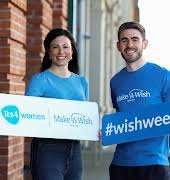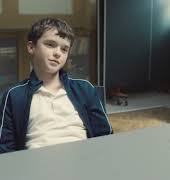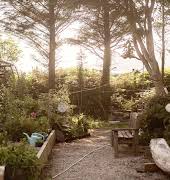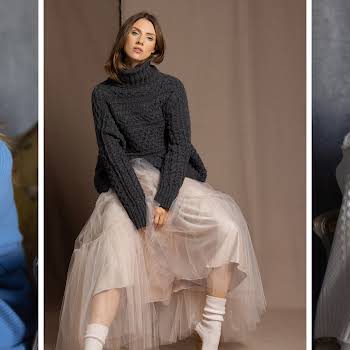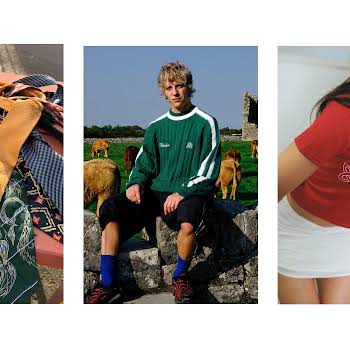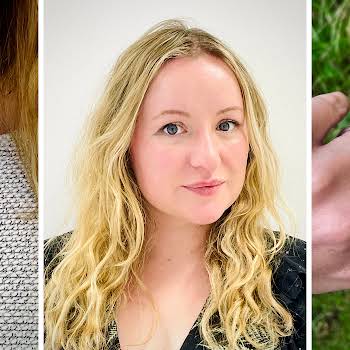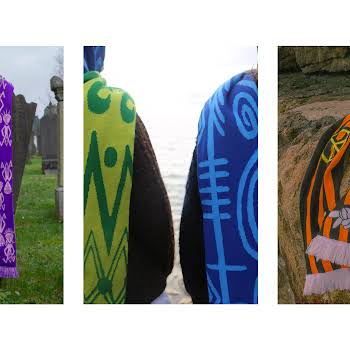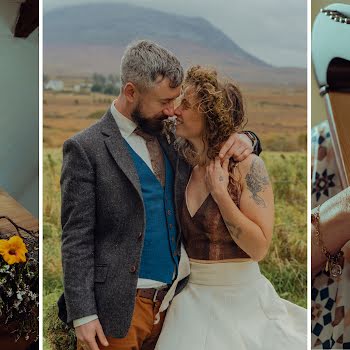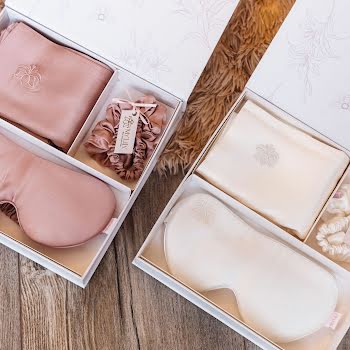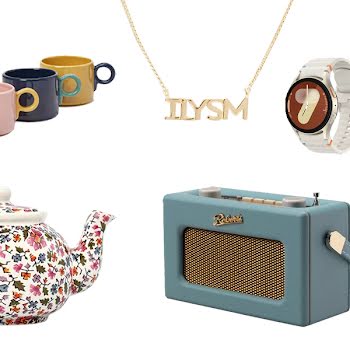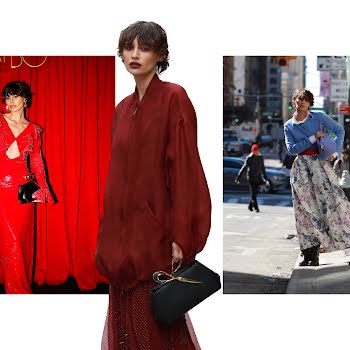
By Oilean
22nd Jan 2023
22nd Jan 2023
Oileán Carter Stritch is one half of Change Clothes Crumlin, a sustainable clothing initiative aimed at bridging the gap between fast fashion and charity shopping. Hoping to change the negative connotations that are often associated with second-hand shopping, here she tells us more about their new Dublin hub and what the project is all about.
Tell us about Change Clothes Crumlin
Change Clothes Crumlin (@clothescrumlin) is a clothing reuse hub in Dublin. We’re creating a social community space for swapping, up-cycling, mending, learning, and meeting like-minded people. We run swap shops and workshops with the aim of creating a more circular economy. Through participants swapping clothes and our workshops teaching repair skills in-house, we estimate that we have saved approximately 19.38 tonnes of carbon in just three months of operation. We have big plans for 2023, which include many brand-new projects and ways of taking climate action. We want to impact our local community and the global community positively, giving the locality an accessible opportunity to participate in sustainable actions, and reducing demand for unsustainable industry globally.
Everyone is welcome to take part in our events. With the cost of living skyrocketing, and an impending climate crisis hanging over our heads, we need to think of solutions that benefit local communities and the wider world we’re living in. We know modern fashion production is having a catastrophic impact on the environment and the people who are paid slave wages to produce it. On a local level, we see clothes dumped in laneways around the area, on a global level, we see photos of deserts full of dumped dead stock. Mass-produced fashion ends up being the most affordable option for a lot of consumers, but fast fashion and the people who buy it have often been vilified. Crumlin is a traditionally working-class area, and people might not want to seem as though they can’t afford certain types of clothes. We can’t expect to change hearts and minds overnight, especially by telling people that they’re doing something wrong.
The idea of the Change Clothes Crumli swap shops is to bridge the gap between second-hand shopping and a modern retail experience. Thriftify provides this service online, and does it very well, but we’re hoping to create a welcoming community hub that also serves as a social and learning space. We hope that with this series of events, we can open people’s minds to pre-loved fashion, in a ‘gradual steps’ type of way. Our goal is not to take customers away from charity retail, far from it, and Crumlin has some amazing second-hand shops. Rather, we want to act as a gateway to people making more sustainable fashion choices, in whatever way suits them best.

What is your mission?
Our mission is to take the doom and gloom out of climate activism. We have both been involved with climate advocacy for years and there have been moments when it has gotten on top of us. It’s easy to feel like a very, very small fish in a very, very big pond with regard to climate change, so we wanted to come up with something that creates meaningful action but is a fun and positive experience. People’s lives are becoming harder with the cost of living crisis, which is in part perpetuated by the climate crisis, so this project gives them an opportunity to get new fashion items in a way which is sustainable, free and allows them to walk away feeling good.
Did you always want to work in fashion?
The way you dress is often linked with how you’re perceived in society – some people use fashion to stand out, others use it to fit in. Most people, whether conscious of it or not, spend quite a bit of time thinking about clothing, accessories and their pairings… but on the contrary, a lot less time is spent thinking about the global supply chain related to each item. At the end of the day, people need to wear clothes, there’s absolutely no point in shaming people for choosing what they can afford. Sustainable options are often expensive and inaccessible, so this project felt like a natural fit.

What kind of items do you stock?
Our swap shops are fully stocked with pre-loved items. Everything at the events has been brought by people in attendance who are looking to sustainably get rid of clothes that no longer fit or are no longer their style. We have received everything from PrettyLittleThing and ASOS clothing with the tags still on (we’re all guilty of forgetting to return online purchases), to designer brands like Tommy Hilfiger and Commes DesGarcon. We quality check everything before we put them on rails to be rehomed and receive very few items of poor quality. When we do, we pull the items aside and recycle and upcycle them. Over 1,239 items have been swapped at our events so far, and 59 have been upcycled to have a new life. We accept men’s, women’s and children’s clothing and accessories – casual, occasion and everything in between.
What new brands or items are on your radar?
We Make Good make the most beautiful homeware items. They give a platform to emerging artists and help people coming from disadvantaged backgrounds to develop their crafts. They’re the type of gifts that you buy for people and have a hard time actually handing over!

Best business advice you’ve gotten
We are not for profit, so any revenue goes towards running the organisation and experimenting with new ideas and projects. Being open to input and ideas from the community is very important to how we develop.
Favourite sustainable style accounts to follow online
We hate greenwashing – we love accounts that really walk the walk in a way that is inclusive, positive and uplifting. Some great accounts which come to mind are @fionnualamoran, @vintageirishkat and @theuselessproject. We really appreciate seeing people who try to take away the negative connotations associated with climate activism in the mainstream media and seeing sustainability integrated as a part of life.
Best fashion purchase
I bought a sewing machine during lockdown and learned how to use it with online tutorials. It has been my best fashion purchase as it allows me to alter things to fit me and I can change things to be exactly how I want them to be. Having a sewing machine has elevated pieces I already own, which I think is important in a world where consumption is pushed on us and trends are in as fast as they’re out again. I try my best to buy things that I really love, so when they get worn out I can try my hand at fixing them rather than throwing them out. I’m sure everyone can relate to having that one pair of trousers or a coat that they just refuse to part with no matter how worse for wear it gets!
Other sustainable Irish brands you love
@nicoleoreillydesign has some super cool eco-conscious knitwear and rugs, @maison.de.joli by drag queen @fauxjoli makes made-to-order genderless custom pieces to reduce waste, @prelovedbyshayandjo by Katrina Carroll sells amazing handpicked vintage pieces and @annabuzanofficial makes the most amazing hand crocheted pieces to order, with the option for recycled materials.
Most useful learning since setting up your community hub
People are open to new ideas. Our events are designed to be fun, with sustainability and money-saving as undertones. It has been amazing to see how engaged people are in the sustainability conversation and just how much they want to be a part of it. The climate crisis affects everyone, and whether it is discussed in everyday conversation or not, it is in the back of everyone’s mind.
Proudest moment so far
Seeing the data collected at the end of our pilot events. It made the results of the project real and inspired us to keep the project going in the future. We are only a two-person team – myself and founder Mary Fleming – but hearing feedback from the community and seeing how far people from outside the community were travelling to be a part of Change Clothes was amazing for us. Seeing that we had saved almost 20 tonnes of carbon really put into perspective our local to global responsibilities and made us excited for the future of the project. Our brains are in overdrive coming up with new ideas, so stay tuned for more family-friendly events, boozy upcycling nights, creative reuse workshops and everything in between!
Best style advice
Wear things that you like, not what’s popular. It’s cliché but it’s true, and it is one of the things that leads to textile waste and overconsumption. Don’t let social media trick you into thinking you like ugly, poorly made things so that someone else can make money off of you.
The 3 ingredients of a good outfit are… something on top, something on the bottom and a pair of shoes. There’s no real formula for a good outfit, wear things that you like that make you feel good.
I want Change Clothes Crumlin to be remembered for… being fun. We want to inspire people to take climate action, not make them feel bad about having to live in a flawed system which they cannot avoid. We want people to walk away proud that they took a sustainable route of textile disposal and delighted with their new preloved items. We are realistic in that we need a wider system change to tackle the climate crisis and that the individual can only do so much. Clothing consumption and disposal are areas in which the individual’s behaviour can have an effect though, and we are proud to be able to provide a space for this to take place… all while having fun and meeting new people!
My advice for shopping more sustainably is… the reality is that your favourite fast fashion influencers are making a profit off of pushing micro trends onto you. Use their content to inspire outfits from items you already have, instead of continually looking for new things – things that are bought so quickly that you don’t even have time to consider whether you really like them or not. If you see something you love, don’t buy it for three days, and if you still want it then you know you must really like it. It is unavoidable that we will need new clothes, but if we do it with a higher level of consideration we will have higher quality wardrobes with less waste.
The second-hand/vintage platforms I shop on are… Depop is amazing for finding pieces for occasions, which may only be worn once or twice. It has already been worn and can be sold on again!

Biggest misconception about shopping second hand/thrifting?
That it is a reflection of your wealth. Second-hand shopping is for everyone, and it has been great to see people of all socioeconomic statuses participating in second-hand shopping in recent years. Some amazing pieces of amazing quality, with strong character are to be found in second-hand shops.
Best thrifting tips?
Don’t write something off just because it’s slightly damaged! Fix it, upcycle it or take it along to us and we’ll give you some ideas.




